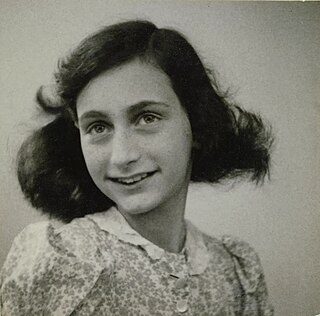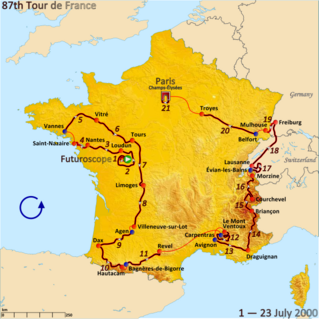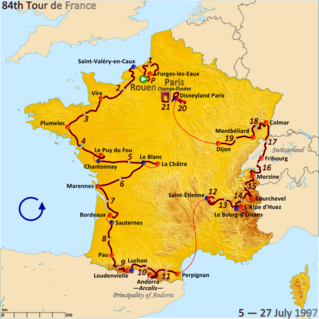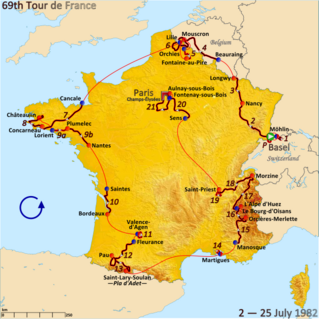Related Research Articles
The Save the Children Fund, commonly known as Save the Children, was established in the United Kingdom in 1919 to improve the lives of children through better education, health care, and economic opportunities, as well as providing emergency aid in natural disasters, war, and other conflicts. After passing a century, which it celebrated in 2019, it is now a global movement made up of 30 national member organizations which work in 120 countries.

Yoko Tsuno is a comics album series created by the Belgian writer Roger Leloup published by Dupuis in Spirou magazine since its debut in 1970. Through twenty-nine volumes, the series tell the adventures of Yoko Tsuno, a female electrical engineer of Japanese origin surrounded by her close friends, Vic Video and Pol Pitron. Their adventures bring them to, among other places, Belgium (Bruges), Germany, Scotland, Japan, Hong Kong, Indonesia and also into outer space. The stories are heavily technology driven, with concepts like robot dragons, suspended animation, time travel, and even an alien species called the Vineans. Despite the often exotic settings and science-fiction plot lines, the stories generally remain realistic on the personal level between the characters and friendship, love and spirituality are some of the key themes of the series. The art is drawn in Ligne claire style, although having originally started out in the Marcinelle style. When depicting real-world settings, Leloup aspires to be as true to reality as possible, with places like Burg Katz or Rothenburg ob der Tauber depicted with almost photographic skill.

Annelies Marie Frank was a German-Dutch diarist of Jewish heritage. One of the most discussed Jewish victims of the Holocaust, she gained fame posthumously with the 1947 publication of The Diary of a Young Girl, in which she documents her life in hiding from 1942 to 1944, during the German occupation of the Netherlands in World War II. It is one of the world's best-known books and has been the basis for several plays and films.

A summer camp or sleepaway camp is a supervised program for children or teenagers conducted during the summer months in some countries. Children and adolescents who attend summer camp are known as campers. Summer school is usually a part of the academic curriculum for a student to make up work not accomplished during the academic year.

Drancy internment camp was an assembly and detention camp for confining Jews who were later deported to the extermination camps during the German occupation of France during World War II. Originally conceived and built as a modernist urban community under the name La Cité de la Muette, it was located in Drancy, a northeastern suburb of Paris, France.

The 2000 Tour de France was a multiple stage bicycle race held from 1 to 23 July, and the 87th edition of the Tour de France. It has no overall winner—although American cyclist Lance Armstrong originally won the event, the United States Anti-Doping Agency announced on 24 August 2012 that they had disqualified Armstrong from all his results since 1 August 1998, including his seven Tour de France wins from 1999 to 2005; the Union Cycliste Internationale confirmed the result.

The 1997 Tour de France was the 84th edition of the Tour de France and took place from 5 to 27 July. Jan Ullrich's victory margin of 9:09 was the largest margin of victory since Laurent Fignon won the 1984 Tour de France by 10:32. Since 1997 no rider has had this convincing of a win with the closest margin to Ullrich's victory being Vincenzo Nibali winning the 2014 Tour de France with a gap of 7:39. Ullrich's simultaneous victories in both the general classification and the young riders' classification marked the first time the same rider had won both categories in the same Tour since Laurent Fignon in 1983. The points classification was won by Ullrich's teammate Erik Zabel, for the second time, and their team Team Telekom also won the team classification. The mountains classification was won by Richard Virenque for the fourth time.

The 1980 Tour de France was the 67th edition of the Tour de France. The total distance was 3,842 km (2,387 mi) over 22 stages. In the first half of the race, Bernard Hinault started out strong by winning the prologue and two stages. However, knee problems forced Hinault to abandon the race while still in the lead. Joop Zoetemelk became the new leader, and defended that position successfully. Just as in 1979 when Hinault and Zoetemelk finished nearly a half hour ahead of the rest of the field, the 1980 edition was a battle between these two riders until Hinault abandoned. At the time Hinault was just 21 seconds ahead of Zoetemelk and the race was about to enter the Pyrenees. Zoetemelk did not wear the yellow jersey during stage 13 though he did in every stage thereafter finishing the race with nearly a seven-minute advantage over second place Hennie Kuiper. It was his first Tour victory in his tenth attempt, after already having finished second in five editions.

The 1993 Tour de France was the 80th edition of the Tour de France, taking place from 3 to 25 July. It consisted of 20 stages, over a distance of 3,714 km (2,308 mi).

The 1975 Tour de France was the 62nd edition of the Tour de France, one of cycling's Grand Tours. It took place between 26 June and 20 July, with 22 stages covering a distance of 4,000 km (2,485 mi). Eddy Merckx was attempting to win his sixth Tour de France, but became a victim of violence. Many French spectators were upset that a Belgian might beat the record of five wins set by France's Jacques Anquetil. During stage 14 a spectator leapt from the crowd and punched Merckx in the kidney. Frenchman Bernard Thévenet took over the lead. After Merckx subsequently fell and broke his cheekbone, he was unable to challenge Thévenet, who went on to win the Tour with Merckx second.

The 1982 Tour de France was the 69th edition of the Tour de France, taking place from 2 to 25 July. The total race distance was 22 stages over 3,507 km (2,179 mi). It was won by Bernard Hinault, his fourth victory so far.

The 1981 Tour de France was the 68th edition of the Tour de France, taking place between 25 June and 19 July. The total race distance was 24 stages over 3,753 km (2,332 mi). It was dominated by Bernard Hinault, who led the race from the sixth stage on, increasing his lead almost every stage. Only Phil Anderson was able to stay close to him, until the 16th stage when he fell behind by about 7:00, and then on the 17th stage he would lose another 17 minutes. In the end only Lucien Van Impe, Robert Alban and Joop Zoetemelk were able to finish inside 20:00 of the now three time champ.

The 1979 Tour de France was the 66th edition of the Tour de France, one of cycling's Grand Tours. It took place between 27 June and 22 July, with 24 stages covering a distance of 3,765 km (2,339 mi). It was the only tour to finish at Alpe d'Huez twice. It was won by Bernard Hinault, who also won the points classification, and whose team won both team classifications. Remarkably Hinault and second place finisher Joop Zoetemelk finished nearly a half hour ahead of the other GC Contenders, and in modern history this was the only time the Yellow Jersey was challenged on the ride into Paris. The mountains classification was won by Giovanni Battaglin, and the young rider classification was won by Jean-René Bernaudeau.

The Government of Morocco sees Western Sahara as its Southern Provinces. The Moroccan government considers the Polisario Front as a separatist movement given the alleged Moroccan origins of some of its leaders.

The 1973 Tour de France was the 60th edition of the Tour de France, one of cycling's Grand Tours. It took place between 30 June and 22 July, with 20 stages covering a distance of 4,090 km (2,541 mi). Eddy Merckx, winner of the previous four editions, did not start the 1973 Tour, partly to avoid angry French fans and partly to please his sponsor; instead he rode and won the 1973 Vuelta a España and the 1973 Giro d'Italia. In his absence, Luis Ocaña dominated the race by winning four mountain stages and two time trials. The end result being a margin of victory exceeding 15 minutes.

The 1970 Tour de France was the 57th edition of the Tour de France, one of cycling's Grand Tours. It took place between 27 June and 19 July, with 23 stages covering a distance of 4,254 km (2,643 mi). It was the second victory for Belgian Eddy Merckx, who also won the mountains classification, and nearly won every major jersey for a 2nd year in a row but finished second in the points classification behind Walter Godefroot by five points. The previous year only one rider was able to keep him within 20:00 and in 1970 a mere four other riders were within 20:00, with only debutant Joop Zoetemelk finishing inside 15:00 of Merckx.

The 1967 Tour de France was the 54th edition of the Tour de France, one of cycling's Grand Tours. It took place between 29 June and 23 July, with 22 stages covering a distance of 4,779 km (2,970 mi). Thirteen national teams of ten riders competed, with three French teams, two Belgian, two Italian, two Spanish, one each from Germany, United Kingdom and the Netherlands, and a Swiss/Luxembourgian team.

The 1958 Tour de France was the 45th edition of the Tour de France, taking place from 26 June to 19 July. The total race distance was 24 stages over 4,319 km (2,684 mi).
Events in the year 1944 in Belgium.

Ion Vinea was a Romanian poet, novelist, journalist, literary theorist, and political figure. He became active on the modernist scene during his teens, his poetic work always indebted to the Symbolist movement, and first founded, with Tristan Tzara and Marcel Janco, the review Simbolul. The more conservative Vinea drifted apart from them as they rose to international fame with the Dada artistic experiment, being instead affiliated with left-wing counterculture in World War I Romania. With N. D. Cocea, Vinea edited the socialist Chemarea, but returned to the international avant-garde in 1923–1924, an affiliate of Constructivism, Futurism, and, marginally, Surrealism.
References
- 1 2 "Tijd van strozak in de stal is echt voorbij". De Telegraaf . 29 June 2010. Retrieved 9 June 2011.
- ↑ Vleuten, Ondine van der (10 July 2008). "Zomerkampen maken spectaculaire groei door". Provinciale Zeeuwse Courant . Retrieved 9 June 2011.
- ↑ Bakker, Stephanie (25 July 2006). "Vakantiestress: wat doen we met de kinderen?". Intermediair . Retrieved 9 June 2011.